“All my life, I have been driven by one dream, one goal, one vision: to overthrow a farm labor system in this nation that treats farm workers as if they were not important human beings. Farm workers are not agricultural implements; they are not beasts of burden to be used and discarded.”
~Cesar Chavez

1305 – Sir William Wallace, having been found guilty on charges of “treason and for atrocities against civilians in war, sparing neither age nor sex, monk nor nun,” was brutally executed in Smithfield, London.
Wallace, a Scottish knight who was the primary leader during the First War of Scottish Independence, was taken from the Tower of London, then stripped naked and dragged through the city at the heels of a horse to the Elms at Smithfield.
He was then strangled by hanging, but released while he was still alive, emasculated, eviscerated and finally beheaded.
His body was cut into four parts (the limbs were displayed across the kingdom but his preserved head (dipped in tar) was placed on a pike atop London Bridge.
In 1869, the Wallace Monument (shown above) was erected, very close to the site of his victory at Stirling Bridge.
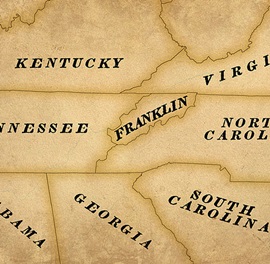
1784 – Four counties in western North Carolina declared their independence as the state of Franklin. The counties lay in what would eventually become Tennessee.
Congress was heavily in debt at the close of the American War for Independence. In April 1784, the state of North Carolina voted “to give Congress the 29,000,000 acres lying between the Allegheny Mountains” (as the entire Appalachian range was then called) and the Mississippi River” to help offset its war debts.
The North Carolina cession had a stipulation that Congress would have to accept responsibility for the area within two years, which, for various reasons, it was reluctant to do.
A few months later, a newly elected North Carolina Legislature reevaluated the situation. Realizing the land could not at that time be used for its intended purpose of paying the debts of Congress and weighing the perceived economic loss of potential real estate opportunities, it rescinded the offer of cession and re-asserted its claim to the remote western district. The North Carolina lawmakers ordered judges to hold court in the western counties and arranged to enroll soldiers for defense.
Representatives from Washington, Sullivan, Spencer (modern-day Hawkins) and Greene counties declared their independence from North Carolina. The following May, the counties petitioned for statehood as “Frankland” to the United States Congress.
A simple majority of states favored acceptance of the petition, but it fell short (by 2 votes) of the two-thirds majority needed to pass, even after the counties changed their proposed name to “Franklin” in an attempt to curry Benjamin Franklin’s favor.
In defiance of Congress, Franklin survived as an independent nation for four years with its own constitution, Indian treaties and legislated system of barter in lieu of currency.
When Cherokee, Chickamauga and Chickasaw began to attack settlements within Franklin’s borders in 1788, it quickly rejoined North Carolina to gain its militia’s protection from attack.
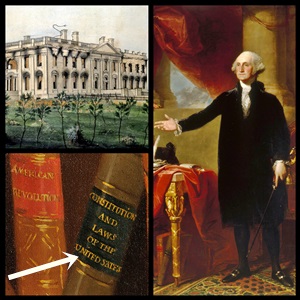
1814 – First lady Dolley Madison saved an iconic portrait of George Washington from being looted – or destroyed – by British troops during the war of 1812.
Or so she thought.
President James Madison was meeting with his generals on the battlefield as British troops threatened to enter the capitol. Before leaving, he had asked his wife to gather important state papers and be prepared to abandon the White House at any moment.
As British troops gathered in the distance, Dolley decided to abandon the couple’s personal belongings and save the full-length portrait of George Washington from desecration by vengeful British soldiers, many of whom would have rejoiced in humiliating England’s former colonists.
Her task fulfilled, Dolley left the White House and found her husband at their predetermined meeting place in the middle of a thunderstorm.
Unbeknownst to her, the portrait she risked her life to save was actually a copy of Gilbert Stuart’s original.
Let me explain the arrow in the photo above. The original, called the “Lansdowne Portrait,” was named for the Marquise of Lansdowne, who, ironically, was the former British prime minister and the first owner of the portrait. The painting of the celebrity president was wildly popular, so Stuart painted several reproductions, one of which was bought by the U.S. government, and one of them was in the White House.
Below the table in the painting are a few books: General Orders, American Revolution, and The Constitution and Laws of the United Sates. Misspelling “the United States” was Stuart’s way of differentiating the copies of the portrait, which today hang in locations like the Old State House in Hartford, Connecticut and the Pennsylvania Academy of the Fine Arts Museum.
You can see the original Lansdowne Portrait – with a properly spelled “United States” on the book binding for the spelling-anxious – at the Smithsonian Museum’s National Portrait Gallery in Washington, D.C.
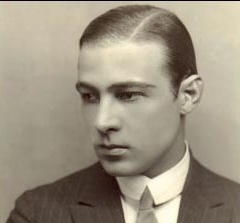
1926 – Silent film star Rudolph Valentino died at the age of 31.
In his brief film career, the Italian-born actor established a reputation as the archetypal screen lover, and his death from a ruptured ulcer sent his fans into a hysterical state of mass mourning, with dozens of suicide attempts reported.
Tens of thousands of people paid tribute at his open coffin in New York City, and 100,000 mourners lined the streets outside the church where funeral services were held. Valentino’s body then traveled by train to Hollywood, where he was laid to rest after another funeral.
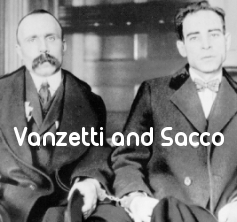
1927 – Despite worldwide demonstrations in support of their innocence, Italian-born anarchists Nicola Sacco and Bartolomeo Vanzetti were electrocuted in Boston for the murders of two men during a 1920 robbery.
On April 15, 1920, a paymaster for a shoe company in South Braintree, Massachusetts, was shot and killed along with his guard. The murderers, who were described as two Italian men, escaped with more than $15,000.
After going to a garage to claim a car that police said was connected with the crime, Sacco and Vanzetti were arrested and charged with the crime. Although both men carried guns and made false statements after their arrest, neither of them had a previous criminal record.
The trial was regarded by many as unlawfully sensational. Authorities had failed to come up with any evidence of the stolen money, and much of the other evidence against them was later discredited.
In the days leading up to the execution, protests were held in cities around the world, and bombs were set off in New York City and Philadelphia.
Crime Factoid: In 1961, a test of Sacco’s gun using modern forensic techniques apparently proved it was his gun that killed the guard, though little evidence has ever been found to substantiate Vanzetti’s guilt.
In 1977, Massachusetts Governor Michael Dukakis issued a proclamation vindicating Sacco and Vanzetti, stating that they had been treated unjustly and that no stigma should be associated with their names.
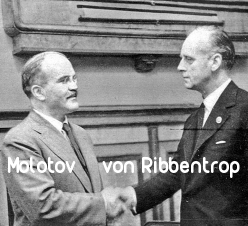
1939 – Nazi Germany and the Soviet Union signed a non-aggression treaty. Believing that Britain would never take him on alone, Adolf Hitler decided to set aside his loathing of communism and Soviet leader Joseph Stalin.
Agreeing basically to carve up parts of Eastern Europe – and leave each other alone in the process – Hitler’s foreign minister, Joachim von Ribbentrop, flew to Moscow and signed the non-aggression pact with his Soviet counterpart, V.M. Molotov.
Of course history proved that once Poland was German-occupied territory, the alliance did not last for long.
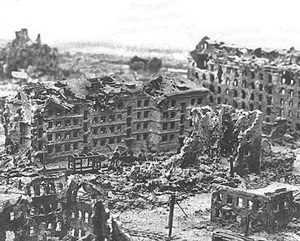
1942 – The five-month Battle of Stalingrad – one of the bloodiest engagements in modern warfare – began when the German 6th Army and the 4th Panzer Army began their assault on the city.
Within a few days of launching its attack, Germany’s Luftwaffe air force had rendered the Volga River impassable to shipping and had sunk several Russian commercial vessels in the process. Incredibly, the city’s 400,000-plus residents were not evacuated, as ruthless head of state Joseph Stalin believed their presence would inspire troops.
Russia’s brutal winter and Germany’s inability to restock their supplies and ammunition eventually turned the tide. By February 1943, the German army was defeated.
Marked by fierce close quarters combat and dozens of direct assaults on civilians in air raids, the Battle of Stalingrad was the largest (nearly 2.2 million personnel) and bloodiest (approximately 2 million killed, wounded or captured) battle in the history of warfare.
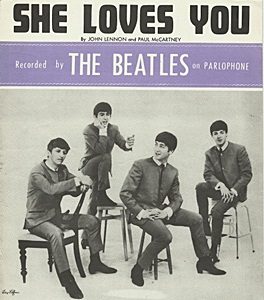
1963 – It was the real beginning of Beatlemania when Parlophone Records released She Loves You in England.
The single had advanced orders of 500,000 copies.
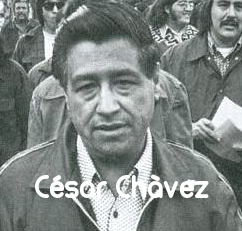
1970 – 5,000-7,000 UFW workers – led by Mexican American labor union leader César Chávez – struck the Salinas Valley growers in what was the largest farm worker strike in U.S. history.
More workers walked off the job in the next few weeks while other unions supported the strike. Shipments of fresh lettuce nationwide decreased dramatically, and the price of lettuce doubled almost overnight.
The real purpose for the strike was a contract which included a special agreement by the growers to give the International Brotherhood of Teamsters, not the UFW, access to farms and the right to organize workers into unions.
The Salad Bowl strike did not end until March 1971 when the Teamsters and UFW signed a new jurisdictional agreement reaffirming the UFW’s right to organize field workers.
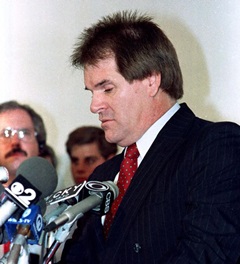
1989 – As punishment for betting on baseball, Cincinnati Reds manager Pete Rose accepted a settlement that included a lifetime ban from the game.
It was known in baseball circles since the 1970s that Rose had a gambling problem. Although at first he bet only on horse races and football games, allegations surfaced in early 1989 that Rose was not only betting on baseball, but on his own team.
Major League Baseball Commissioner A. Bartlett Giamatti began an inquiry, and hired Washington lawyer John Dowd to head the investigation. Dowd compiled hundreds of hours of testimony from numerous sources that detailed Rose’s history of gambling on baseball while serving as the manager of the Cincinnati Reds, including betting on his own team.
Part of the settlement stated: Peter Edward Rose acknowledges that the Commissioner (Bart Giamatti) has a factual basis to impose the penalty provided herein, and hereby accepts the penalty imposed on him by the Commissioner.
In 2004, after years of repeated denials, Rose published My Prison Without Bars, in which he finally confessed to gambling on the Reds, though he added that had always bet on the Reds to win.
Because of the lifetime ban, Rose cannot work in Major League Baseball and, despite his stellar playing career, he is not eligible for the Hall of Fame.
A heated debate continues to rage as to whether Rose, a former player who remains the game’s all-time hits leader, should be given a second chance.
For the record, it is not Major League Baseball that is denying Rose a chance for enshrinement in the Hall of Fame.
On February 4, 1991, the National Baseball Hall of Fame voted formally to exclude individuals on the permanently ineligible list from being inducted into the Hall of Fame by way of the Baseball Writers’ Association of America vote.

1996 – Osama bin Laden issued a fatwā against the United States, which was first published in Al Quds Al Arabi, a London-based newspaper.
It was entitled “Declaration of War against the Americans Occupying the Land of the Two Holy Places.”
Saudi Arabia is sometimes called “The Land of the Two Holy Mosques” in reference to Mecca and Medina, the two holiest places in Islam. The reference to “occupation” in the fatwā referred to U.S. forces based in Saudi Arabia for the purpose of controlling air space in Iraq.
At the time, bin Laden was not a wanted man in any country except his native Saudi Arabia, and was not yet known as the leader of the international terrorist organization al-Qaeda.
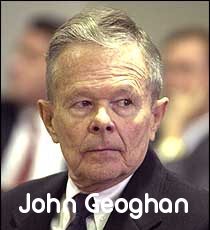
2003 – Former Roman Catholic priest John Geoghan, a convicted child molester, was strangled and stomped to death in his cell by a fellow inmate in a Massachusetts prison.
Over a 30-year career in six parishes, Geoghan was accused of sexual abuse involving more than 130 boys. He was prosecuted in Cambridge, Massachusetts for charges of molestation that took place in 1991.
Defrocked by Pope John Paul II in 1998, Geoghan was found guilty in January 2002 of indecent assault and battery on a 10-year-old boy in a swimming pool at the Waltham Boys and Girls Club in 1991, and was sentenced to nine to ten years in prison.
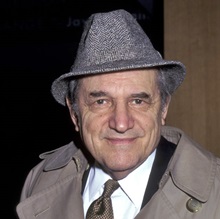
2016 – Actor Steven Hill died of natural causes at the age of 94.
Hill played small roles in films and made many appearances in television dramas but he is best known for two roles. He played the character of Dan Briggs, the head of the IMF team, on the first season of Mission Impossible, and later starred for ten years as District Attorney Adam Schiff on Law & Order.
Hill Factoid: Hill received an Emmy nomination in 1960 for his portrayal of Bartolomeo Vanzetti in The Sacco-Vanzetti Story … and as noted above, the real Vanzetti also died on August 23.
Compiled by Ray Lemire ©2019 RayLemire.com / Streamingoldies.com. All Rights Reserved.
Definitely on your game today Ray – hard to imagine how barbaric we have been (William Wallace). I love the way you draw from so many areas for these – I remember some well — have heard bits and pieces of some — and some are totally new information. We are so fortunate that you are willing to put so much time and effort into our continued education. Thank you again for all you do. You are definitely one of the Class of 68’s extra special people …
Barbara, there are times I worry that being too graphic might alienate people, but then I remember that “it is what it is.“. To minimize it would not be right. It happened and it deserves to be written the way it happened.
As always, thank you for your kind words and tremendous support. 🙂